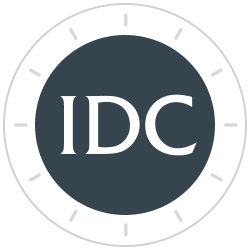Who Uses IDC’s Quarterly Ranks, and Why?
The IDC Financial Publishing (IDCFP) quarterly ranks of banks and credit unions have become one of the nation’s prime sources of institution quality rankings. Individual banks, holding companies, and credit unions rely on IDCFP’s data when evaluating their institution’s performance in relation to their peers. In addition, IDCFP’s quarterly assessment and ranks assist management in setting goals to improve quality through its supplemental peer group listings and case studies.
A variety of governmental agencies and home mortgage companies use IDCFP’s ranks to assess potential financial relationships. In addition, many state governments and municipalities will reference our rankings, as well as the vast majority of brokers issuing or trading bank certificates of deposit. Private companies, individual investors, and insurance companies also rely on IDCFP’s timely information.
IDCFP has been rating the safety and soundness of banks, savings institutions, and credit unions since 1985, establishing ourselves as a longstanding and reliable source. We aim to understand the potential risks to an institution and identify areas of potential negative outcomes that could arise in the future.
The IDCFP rank is important for at-a-glance assessment, but more importantly, we give you the ability to determine why things are going well...or not so well. That information is contained in each of the ratios that comprise the overall ranking.
We consider and weight all of the ratios to reflect their relative importance to the health of a financial institution. As a result, we have devised a method of producing one overall rank number that ranges from 300, the highest, to 1, the lowest.
IDCFP’s analysts are also continually refining the financial ratios we measure, in order to fine-tune the assessment process even further. Among these unique IDCFP ratios, two are of particular importance: The Common Stockholder's Net Operating Profit After-tax Return on Tangible Equity (NOPAT ROE) ratio; and the Operating Profit Margin.
Using NOPAT ROE and Operating Profit Margin ratios allows us to properly assess operating and financial leverage strategies. Our NOPAT ROE provides a better measure of each bank’s performance when compared with the traditional stockholder ROE. In our next article, we will go into more depth and detail regarding the traditional ROE versus our NOPAT ROE equation.
To view all our products and services please visit our website www.idcfp.com. For more information, please contact us at 800-525-5457 or info@idcfp.com.
John E Rickmeier, CFA
President
jer@idcfp.com
Robin Rickmeier
Marketing Director
